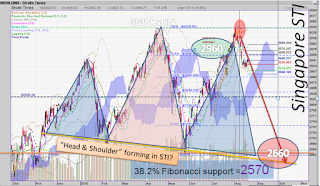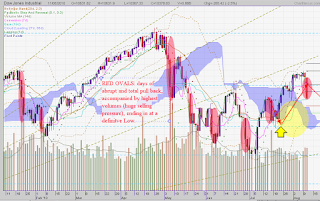A Contrarian View - Still A Chance for More Upside?

Weekly Updates is what I promised but this week there are no really new insights into the current short term outlook. This blog has started to take off, getting hits from Australia to Poland, Israel to Canada. It will be interesting where it takes us. However, this is always only going to be the Menu , not the actual Dish. To get a real taste and nourish your portfolio, you need to seek the help of the author, or any investment advisor of SingCapital. In a talk I gave last Friday, I showed the chart for the STI , complete with the outline of a head and shoulder formation - and the arrow along the side of the right shoulder pointing toward a potentially dramatic downturn into October and November. I have never experienced an entire audience GASP! This is the graph: Indeed, it shows the drama that seems to unfold. Head & Shoulders typically are a 'topping formation', indicating that a major top is in. Some parameters to take note: The crucial ceiling for the f


